De Soto T1 Black Pearl Wetsuit (Top and Bottom)unisex
$649.00 – $749.00Price range: $649.00 through $749.00
Product Description
(Code: )
Product Description
Look sharp and be noticed in your new 2014 T1 Black Pearl Pullover
Top
This value-priced suit is lined with 4-way stretch Nylon Lycra® to minimize chafing. All seams are glued and blind-stitched, making them stronger than the rubber itself. All wetsuit models feature sleek graphics and are sold as separates for a more customized fit.
The Black Pearl has the same design, construction, and fit as the T1 First Wave, but is made of GreenGoma™ #8 Rubber with Super Composite Skin.
This model offers a very affordable option without sacrificing warmth, comfort, and durability.
Flexible 2mm body and arms with a low neckline.
BIO-STROKE design puts your arms into a forward rotated shoulder position for a more efficient swim stroke.
YKK Custom Zipper is the smallest and lightest and makes removal easier than ever.
Chlorine resistant treatment, but not recommend for repeated use in chlorinated water.
Lighter zipper weighs 30% less with same tensile strength and lower neckline.
All T1 Wetsuits are made of GreenGoma™ a limestone rubber…bye-bye petroleum wetsuits
Until recently all triathlon wetsuits have been made of petroleum. First in the industry to introduce limestone rubber into our wetsuits, all T1 Wetsuits incorporate this amazing GreenGoma™ technology.
So what does this all mean to you?
GreenGoma™ rubber offers better stretch, buoyancy, durability, and insulation with a more closed-cell injected construction thus making it 98.9% water impermeable. So it is lighter, it dries quicker, and lasts longer. The only part of the rubber that gets wet is the new stretch liner that is now made of recycled post consumer products.
So is this rubber environmentally friendly? Is it a “green” wetsuit?
We have seamlessly replaced one rubber with another that is better, more buoyant, helps you swim faster, and lasts longer. If nothing else were to change, you will have a better-performing product with less detriment to the environment, which is always our goal.
Please allow us to be perfectly upfront. There are a handful of companies that are manufacturing wetsuits out of limestone rubber and then marketing them as environmentally-friendly. Currently, wetsuit rubber is either made of petroleum, which begins with oil exploration and drilling, or, in the alternative, made of limestone, which begins with mining. Both petroleum and limestone have taken hundreds of thousands of years to produce and both are nonrenewable resources; both are in limited supply on our earth, require heat, and create pollution and waste to refine into a finished product. So for one to claim that a limestone wetsuit is “green” is just not true, at least not yet.
It is apparent in light of the recent oil spill in the Gulf of Mexico, that limestone is cleaner when one considers the risk of environmental disasters. The factory that makes our GreenGoma™ uses much less heat to refine it as compared to its petroleum counterpart. This is a step in the right direction.
In order for us to step away from limestone in the future, we need to first step away from petroleum and look for other “greener” options. The idea of trying to create a green wetsuit has inspired us to change to recycled internal fabrics with no VOC (Volatile Organic Compounds) dyes. The use of non-toxic laminates and adhesives during the assembly process are additional steps in our goal. We are getting closer to finding water-based adhesives that are stronger and more flexible. Finally we are working with YKK on developing a wetsuit zipper made of recycled materials.
As for recyclability and sustainability, no wetsuit rubber in the world is recyclable. Yes, old triathlon wetsuits can and should be re-used for other sports, or can be cut up and used as potholders, used for insulation and even be turned into beer and soft drink koozies. For now, the most obvious form of sustainability is simply that we have created a wetsuit that will last longer, so you will not have to replace it as soon.
Before any of us can swim 2.4 miles, we first need to get across the length of a pool. When it comes to making a greener wetsuit, we are the first to dive in!
Bibjohn
The Black Pearl suit is lined with 4-way stretch Nylon Lycra® to minimize chafing. All seams are glued and blind-stitched, making them stronger than the rubber itself. All models feature sleek graphics and are sold as separates for a more customized fit.
The Bibjohn is 5mm thick from the oval ankle openings up to the crotch and up the sides of the hips. From that seam up, the Bibjohn is 2mm thick. This includes the midsection around the stomach, low back, as well as the bib straps that extent up the spine in back and up the chest in front. It is designed like this so that when you wear any of our T1 tops, the total rubber thickness remains less than 5mm thick, so you have all the needed flexibility, while keeping your spine and vital organs warm, thus keeping you toasty warm. The total thickness also adheres to all rulings from all national and international governing organizations that limit the maximum wetsuit thickness to 5mm.
2mm Bib straps go over the trapezius (base of neck), so no limited reach, no tired shoulders, faster swim times.
The Black Pearl has the same design, construction, and fit as the T1 First Wave, but is made of GreenGoma™ #8 Rubber with Super Composite Skin.
This model offers a very affordable option without sacrificing warmth, comfort, and durability.
Chlorine Resistant Treatment
Eliptical leg openings for faster and easier removal, longer seam tape for self-customizing leg length, and lower profile Bibjohn straps with soft Lycra trim.
All T1 Wetsuits are made of GreenGoma™ a limestone rubber…bye-bye petroleum wetsuits
Until recently all triathlon wetsuits have been made of petroleum. First in the industry to introduce limestone rubber into our wetsuits, all T1 Wetsuits incorporate this amazing GreenGoma™ technology.
So what does this all mean to you?
GreenGoma™ rubber offers better stretch, buoyancy, durability, and insulation with a more closed-cell injected construction thus making it 98.9% water impermeable. So it is lighter, it dries quicker, and lasts longer. The only part of the rubber that gets wet is the new stretch liner that is now made of recycled post consumer products.
So is this rubber environmentally friendly? Is it a “green” wetsuit?
We have seamlessly replaced one rubber with another that is better, more buoyant, helps you swim faster, and lasts longer. If nothing else were to change, you will have a better-performing product with less detriment to the environment, which is always our goal.
Please allow us to be perfectly upfront. There are a handful of companies that are manufacturing wetsuits out of limestone rubber and then marketing them as environmentally-friendly. Currently, wetsuit rubber is either made of petroleum, which begins with oil exploration and drilling, or, in the alternative, made of limestone, which begins with mining. Both petroleum and limestone have taken hundreds of thousands of years to produce and both are nonrenewable resources; both are in limited supply on our earth, require heat, and create pollution and waste to refine into a finished product. So for one to claim that a limestone wetsuit is “green” is just not true, at least not yet.
It is apparent in light of the recent oil spill in the Gulf of Mexico, that limestone is cleaner when one considers the risk of environmental disasters. The factory that makes our GreenGoma™ uses much less heat to refine it as compared to its petroleum counterpart. This is a step in the right direction.
In order for us to step away from limestone in the future, we need to first step away from petroleum and look for other “greener” options. The idea of trying to create a green wetsuit has inspired us to change to recycled internal fabrics with no VOC (Volatile Organic Compounds) dyes. The use of non-toxic laminates and adhesives during the assembly process are additional steps in our goal. We are getting closer to finding water-based adhesives that are stronger and more flexible. Finally we are working with YKK on developing a wetsuit zipper made of recycled materials.
As for recyclability and sustainability, no wetsuit rubber in the world is recyclable. Yes, old triathlon wetsuits can and should be re-used for other sports, or can be cut up and used as potholders, used for insulation and even be turned into beer and soft drink koozies. For now, the most obvious form of sustainability is simply that we have created a wetsuit that will last longer, so you will not have to replace it as soon.
Before any of us can swim 2.4 miles, we first need to get across the length of a pool. When it comes to making a greener wetsuit, we are the first to dive in!
| Size | 2, 3, 4, 5, 6, 7 |
|---|
Be the first to review “De Soto T1 Black Pearl Wetsuit (Top and Bottom)unisex” Cancel reply
You must be logged in to post a review.
Related products
Desoto
Desoto


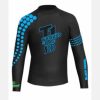
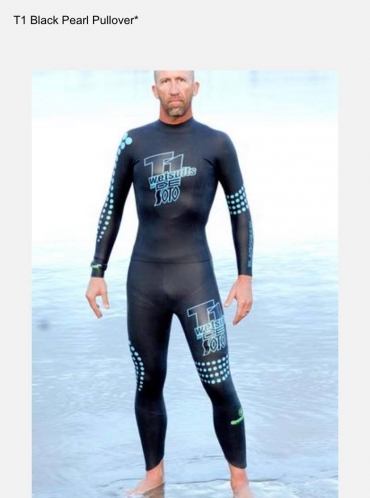
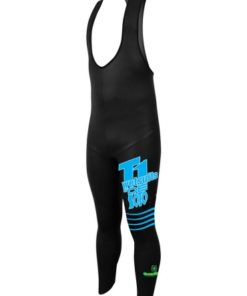
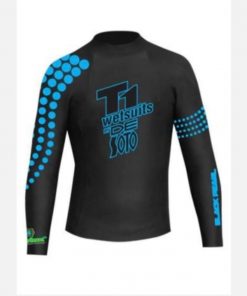
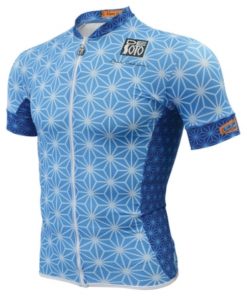
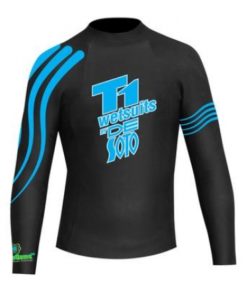
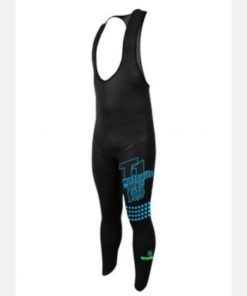
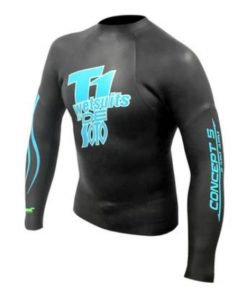
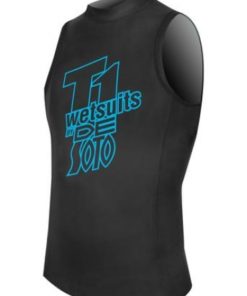
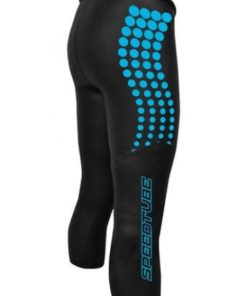
Reviews
There are no reviews yet.